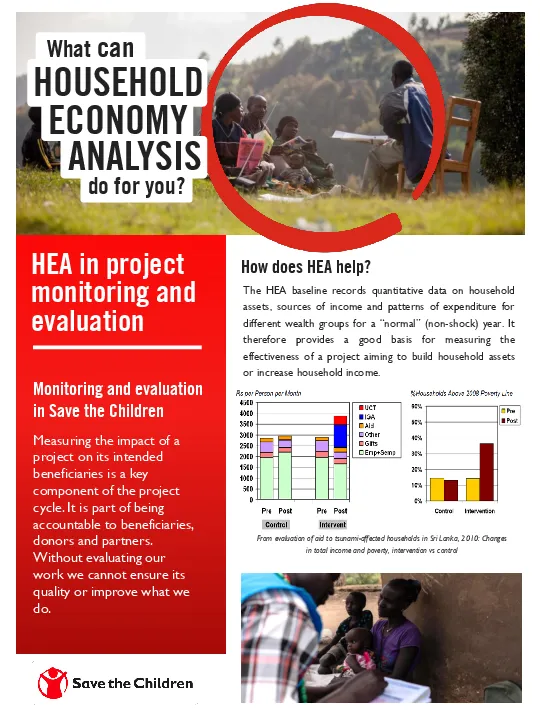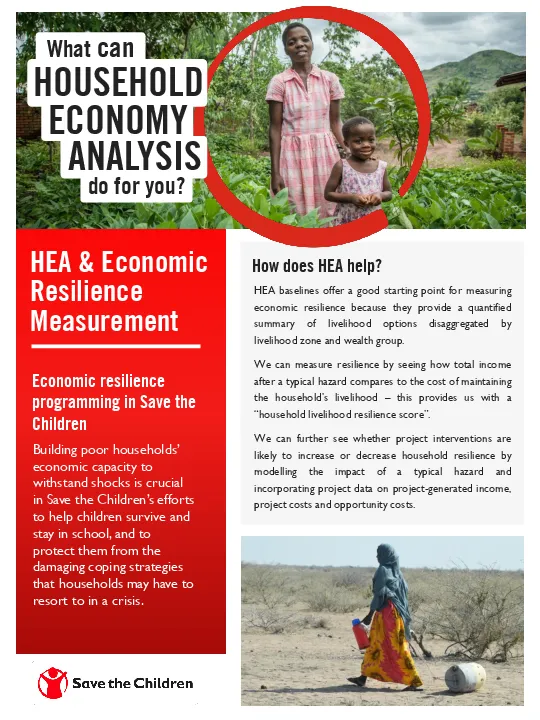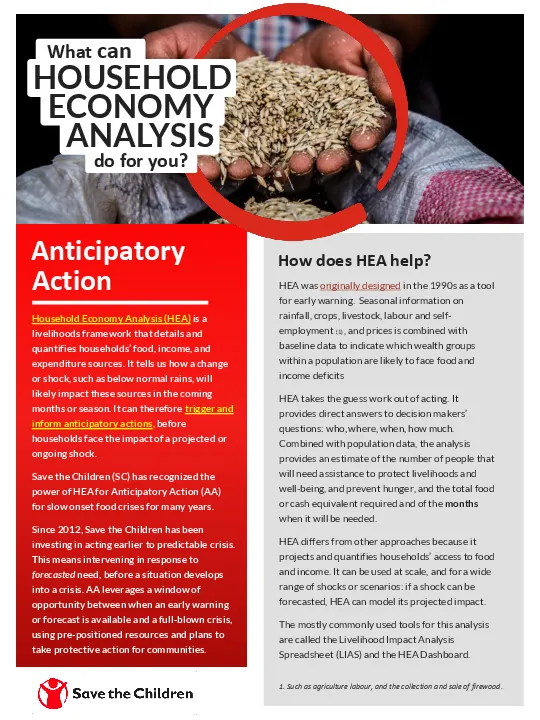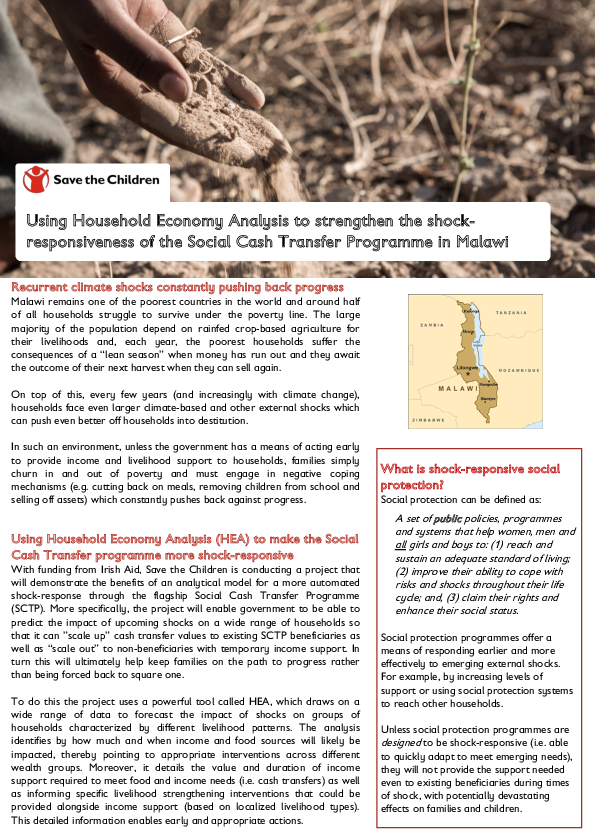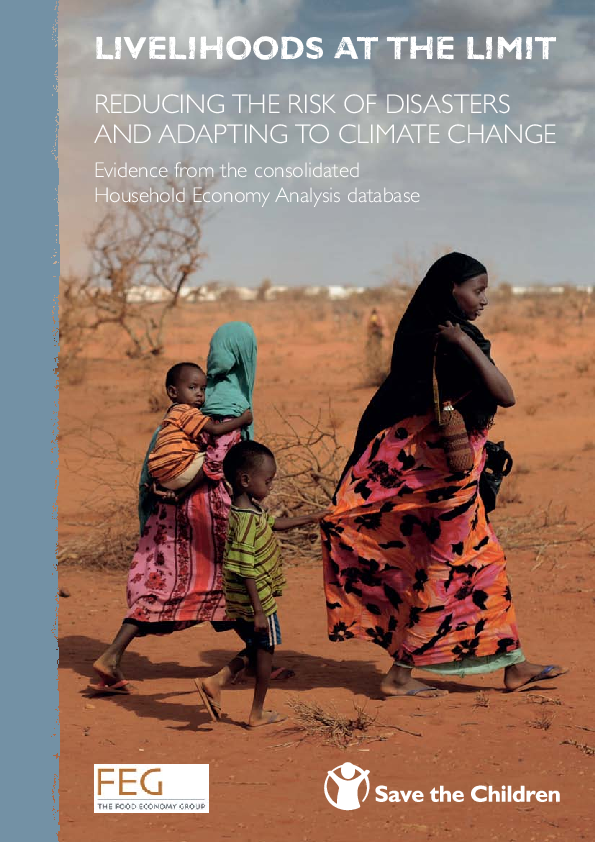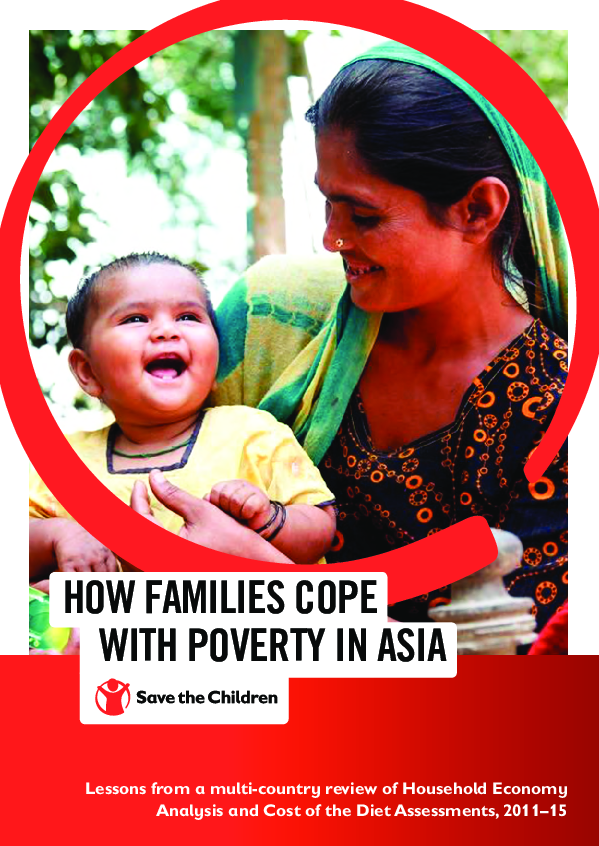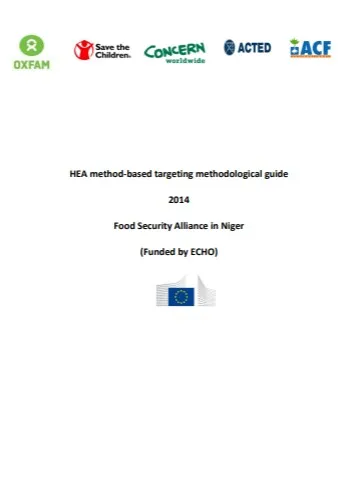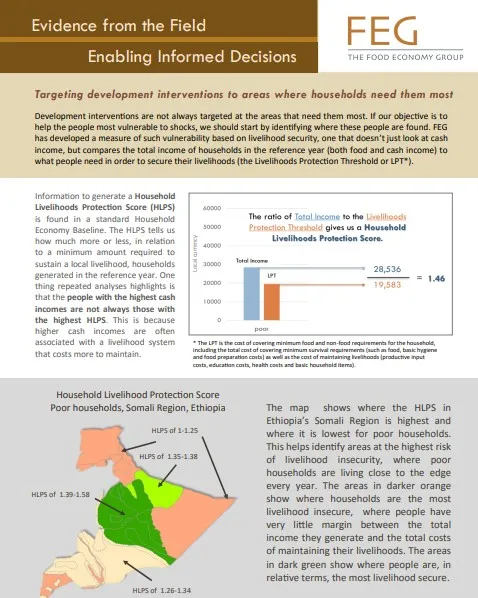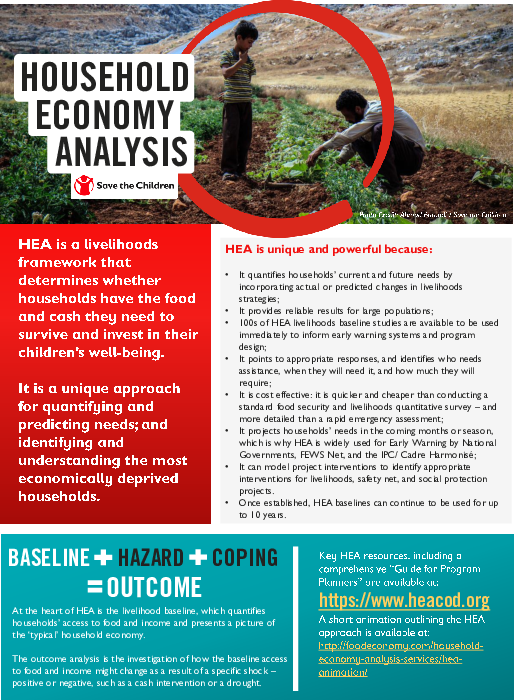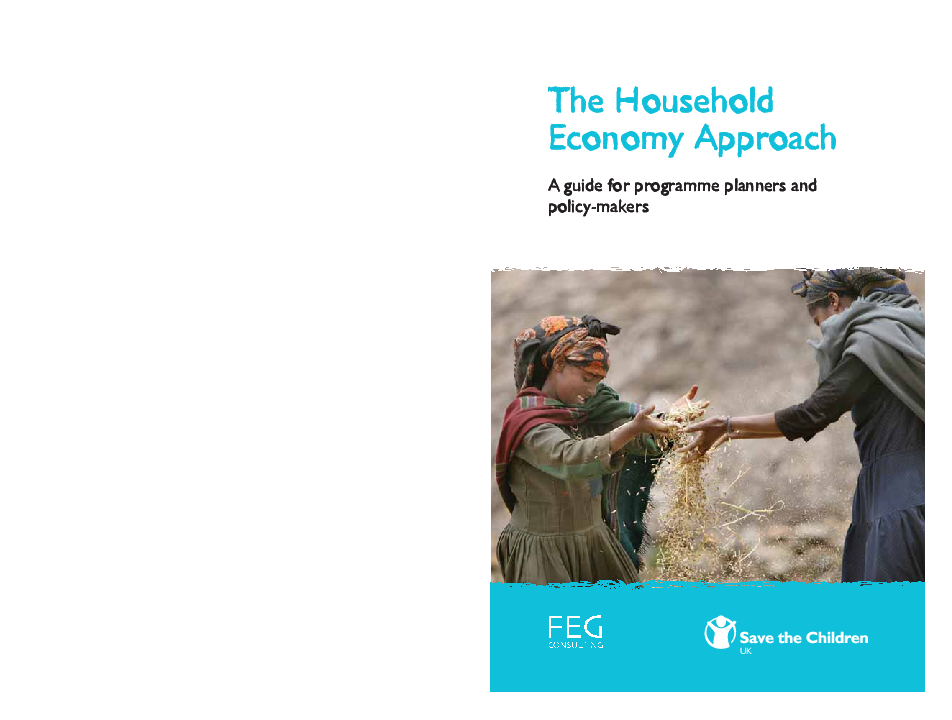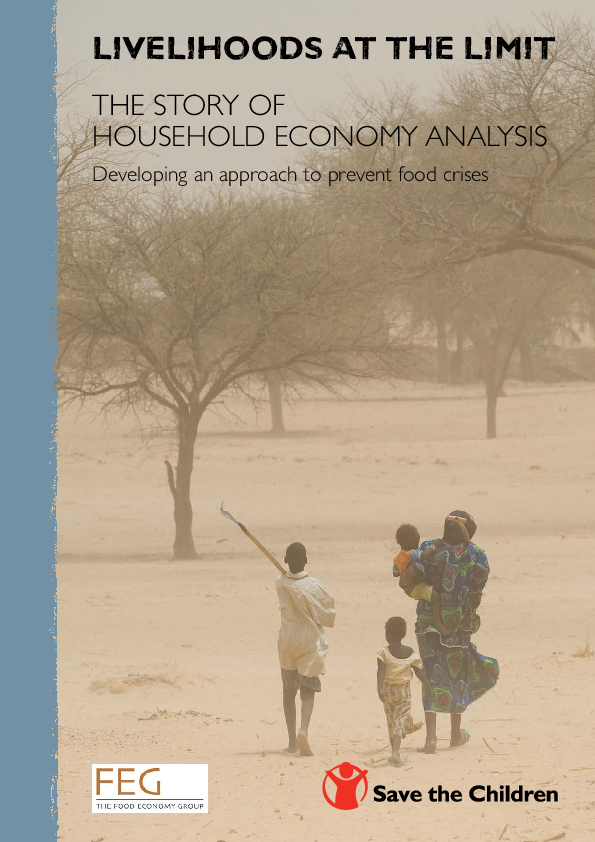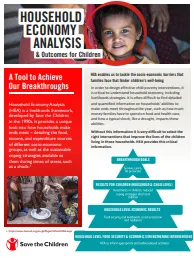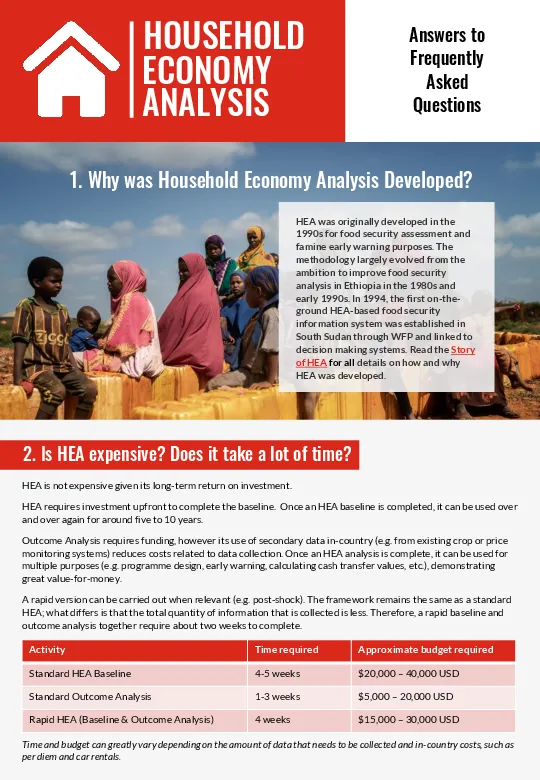Household Economy Analysis
Share:
Welcome to the Household Economy Analysis (HEA) resource page. HEA was developed in the 1980s as a tool to assess and understand the economic strategies of households facing food insecurity. It helps humanitarian agencies respond effectively to crises by analysing how households cope with shocks and stresses, informing targeted interventions. HEA provides a clear representation of the inside workings of household economies at different levels of wealth and in different parts of the world and is used in various settings and for a range of programming needs. It has been used in rural and urban contexts, in areas prone to food crises as a result of droughts or market shocks, in countries with established, national early warning systems, in emergency and development contexts, and in refugee and IDP contexts. HEA is based on the principle that having a detailed understanding of how people make ends meet in a normal year – that is, their food, income and expenditure sources – is essential for assessing how livelihoods will be affected by wider economic or ecological change. This will enable the planning of interventions that will support, rather than undermine, their existing survival strategies.

At the heart of the HEA is an analysis of:
- How people in different social and economic circumstances get the food and cash they need;
- Their assets, the opportunities open to them and the constraints they face; and
- The options open to them at times of crisis.
It involves the analysis of the connections among different groups and different areas, providing a picture of how assets are distributed within a community and who gets what from whom.
This information can be used for a wide range of purposes, including development planning, emergency response, early warning, monitoring and evaluation, poverty analysis and reduction, and policy analysis.
Please also find the Cost of the Diet resource page HERE
Visit the combined Household Economy Analysis and Cost of the Diet collection page for all resources HERE.
Video designed and produced by the Food Economy Group – FEG | Food Economy Group
HEA was originally developed as a tool for early warning of acute food insecurity but is used increasingly in wider programme design including social protection and livelihoods programmes including the following:
What can HEA do for you?
8 resources
Video designed and produced by the Food Economy Group – FEG | Food Economy Group
The HEA Framework
Baseline Assessment
An HEA baseline provides a quantified picture of people’s food and income sources and expenditure patterns.
- Analysis is done according to ‘livelihood zones’ (i.e. geographical areas where people broadly share the same livelihood options and access to markets).
- Livelihoods are described according to wealth (i.e. for very poor, poor, middle and better off households).
- Analysis is for a named ‘reference’ or typical year.
Outcome Analysis
Outcome Analysis is the investigation of how the HEA baseline access to food and income might change as a result of a hazard such as drought or as the result of a positive change, such as a livelihoods programme.
- Seasonal monitoring data or project data is translated into economic consequences at household level (e.g. 30% reduction in crop production or 20% reduction in livestock prices compared to the baseline); this is called the ‘problem specification’.
- The analysis takes into account households’ capacity to cope themselves (e.g. capacity to earn more cash through labouring or selling more livestock).
- The projected outcome is the estimated shortfall in food and income faced by different wealth groups in terms of (usually) two thresholds: the amount needed to (a) survive and (b) maintain their livelihoods.
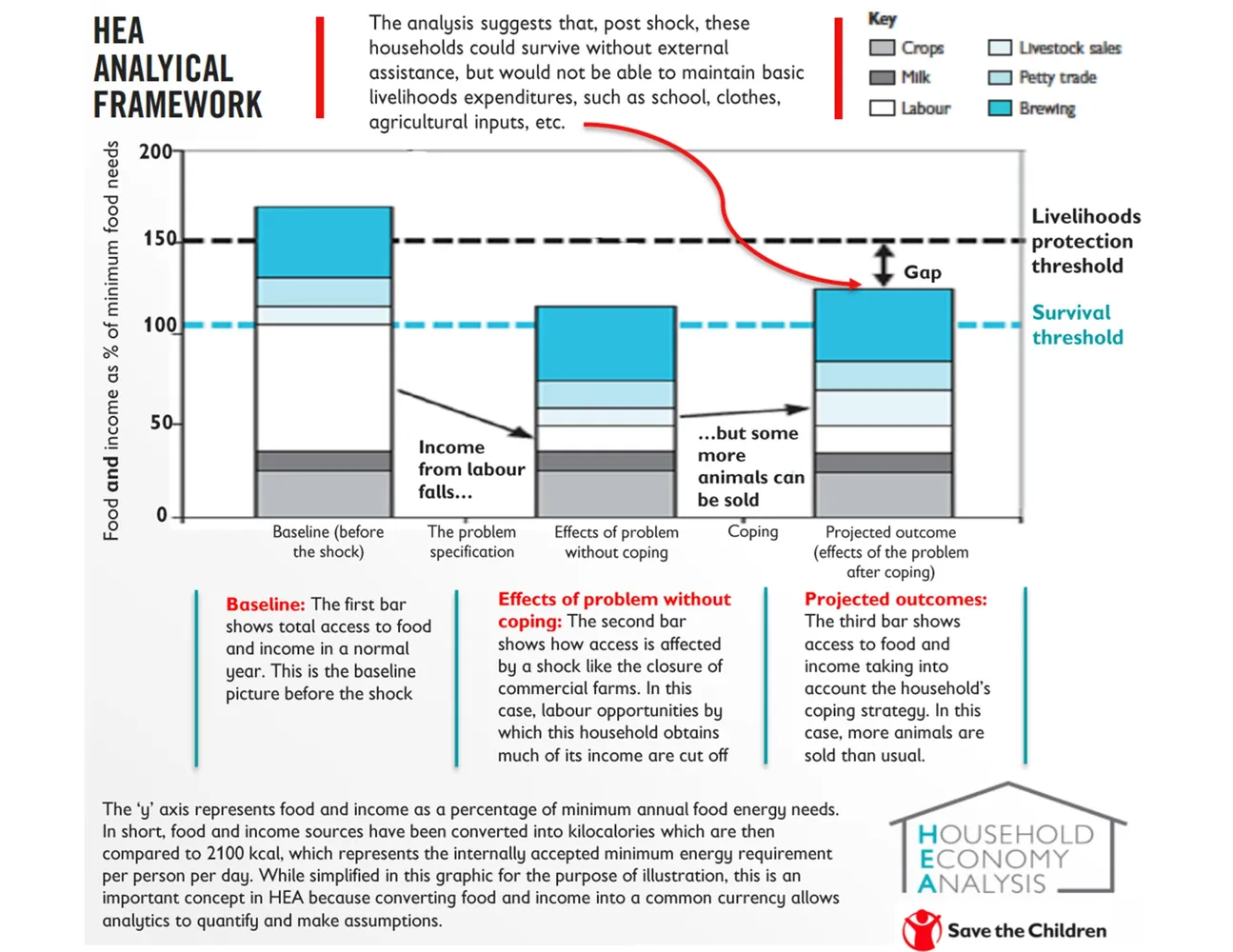
Learn More
5 resources
Share
Link

